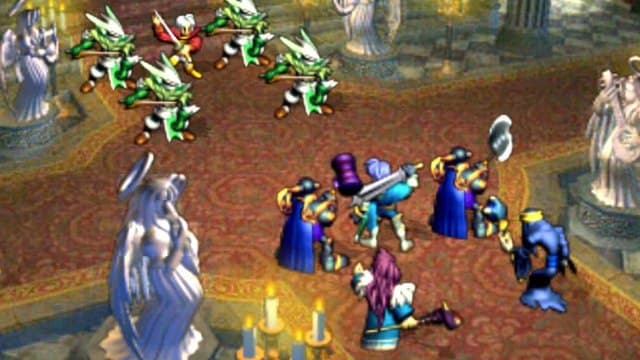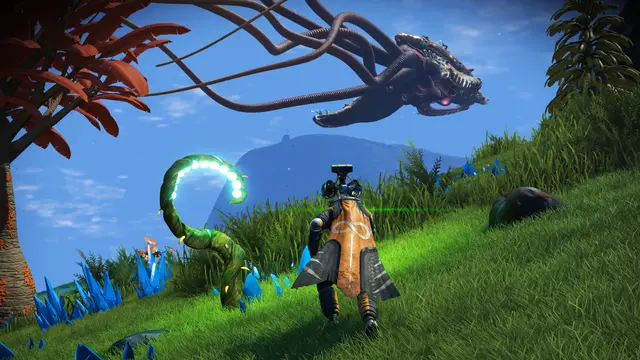Capcom has been hitting it out of the park recently: the series-revitalizing Resident Evil 7 became their fifth-best selling game ever, the Resident Evil 2 remake has been getting dazzling reviews, and the company dipped into their backlog to offer a beautifully polished remaster of Onimusha. While EA is forcing studios like Bioware to crank out “live service” games that are neither within their skillset nor their fanbase’s interest, Capcom has finally (Street FIghter debacles aside) clicked back with what made people love them in the first place. And while they’re riding high, the best thing Capcom can do is continue on with this trend of innovating on classic titles and straight-up remastering forgotten classics. Which means one thing: the time is right for them to bring back 2005’s Haunting Ground, a game with all the mechanics of a Resident Evil and a good precious doggo to boot.

Alone with Your Stalkers
Released in Japan as Demento, Haunting Ground opens with 18-year-old Fiona Belli waking up in an unlocked cage wearing nothing but a sheet. In short order she finds out that her parents are dead and the spooky castle she’s in is her inheritance. Unfortunately, that castle also comes with a series of servants who mean Fiona harm, and her only protection is a white German Shepherd named Hewie.
The gameplay feels like a spiritual successor to Clock Tower, the series that originated the “helpless protagonist stalked by an unkillable threat” genre in gaming, and was released alongside fellow genre entry and criminally underrated gem Rule of Rose. Fiona explores the castle and collects items in order to solve puzzles while avoiding death traps and must evade her pursuers using music cues and hiding spots. The goal is simple: get out alive.

Non-OSHA Compliant Architecture
Like the best Residents Evil, Haunting Ground is about getting to know a singular location that expands in weird, inventive ways over the course of the game. But more than that, it is about locking mechanisms and floor plans designed by someone snorting paint fumes in zero gravity. Doors that require extensive furniture rearrangement to unlock? Sure! Spooky underground carousel? Why not! Room full of marionettes with pressure-sensitive needle traps? You never know when guests are coming!
It’s both different and structurally familiar to anyone who knows Capcom’s most famous franchise, setting old tricks in a new mold. And while evading stalkers can sometimes get more annoying than scary as you’re chased halfway across the building from the puzzle you were working on, it’s an admirable example of level design with surprisingly minimal loading screens for the time.

Come for the Dog, Stay for the Camp (and the Dog)
Speaking of weirdness, Haunting Ground deserves to be preserved for the utter ridiculousness of its plot alone. While it begins as a simple “get out of the scary place,” it rapidly spirals into a story about cults, alchemy, and clones, getting more and more absurd as the mansion reveals new and bizarre depths. What really sells it, though, is the way it’s told — little moments of technical ineptitude that have the unintended effect of making the game memorable.
While the story might get stranger and more complex, FIona herself never really takes a more active interest in it. Her goal, from beginning to end, pretty much remains “get out of the scary place.” She might ask her pursuers why they’re trying to kill her, but every discovery she makes is a means to an end — she’s incurious as to the larger why, never shifting into wanting to actively solve the story’s mystery even though it very much concerns her. Theoretically frustrating in a less interactive medium, in a videogame it results in an almost dreamlike feeling as the player wanders through a museum of abandoned objects divorced from the people who gave them meaning.
It’s also, bless its heart, more than a little campy. Every voice actor has been given an emotional beat and urged to turn it up to twelve: Fiona has a breathy British accent, homunculus maid Daniella does not understand HuMon EmoTIons but also escalates to shrill and unsettling laughter, and creepy butler Ricardo has been strictly instructed to leave no bit of scenery unchewed. It’s not good, strictly speaking, but it also overflows with sincerity — the key ingredient of any successful B-horror.

Know Fear
When the scares begin to wear off, the utter nonsense of the writing is there to keep the player hooked. And while the story’s gender politics aren’t exactly stellar, with a little too much emphasis put on Fiona’s lovingly rendered jiggle physics, it also manages some genuinely unsettling moments that play into the fear of losing bodily autonomy. While the relentlessness of the stalkers can sometimes tip from scary into frustrating, the utter oppressiveness of FIona’s situation repeatedly drives home the fact that she is seen as an object, not a person.
Each antagonist wants to use Fiona for the mysterious alchemical power contained within her womb. Not a single one of them cares about the human being inside of the body — they ignore her questions and quickly grow violent when she resists submitting to their desires, their logic monstrous and inexplicable no matter how Fiona begs for an explanation. It’s surprisingly effective at capturing the frustrated bewilderment just about every woman and trans person lives with: hostility from total strangers at the way you choose to dress and behave, veiled threats that explode into real violence because you dared not to be interested in the “nice guy” who decided he wanted you, and bigotry that considers you a blight just for existing. While it sometimes undermines itself, its readiness to embrace decay and sleaze in its environment and antagonists is uniquely effective at hammering in a sense of griminess on your very soul.
But the real selling point, I think you’d all agree, is getting to have a loyal dog stick with you through the jump scares. Hewie feels similar to The Last Guardian’s Trico: heart-meltingly adorable, with lots of incidental behavioral ticks that feel like a real animal. This is really cute most of the time, except when you need him to do something for a puzzle solution and he decides to go wander off and sniff something instead. Most importantly of all, the game encourages you to bond with Hewie, giving you a whole range of button commands to train him and tying what ending you get to how well you’ve treated your friend. Why on earth did we let the “girl and her dog survive a scary world” subgenre go out of fashion?

Remaster or Remake?
It might be a tall order to ask for a full Haunting Ground remake. There’s still a prevailing attitude in the AAA gaming industry that horror doesn’t sell, however often this is proven untrue by the wild success of games like Outlast, Resident Evil 7, and arguably Bloodborne — games that all sell incredibly well as long as they’re not expected to outsell Fortnite.
Fortunately, Haunting Ground would look damn good even with a simple remaster. The in-engine work has gotten a little rough around the edges, but the cinematics are still gorgeous to look at almost fifteen years later. A coat of paint that brings the rest of the graphics up to that level could stand alongside other games on systems like the Switch, and minimal tinkering with the NPC AI could do away with most of the frustration new players might face. Heck, the game even received a digital release for the Playstation 3 in Japan, so there’s clearly preserved code to work with — unlike the infamous Silent Hill HD Collection debacle.
There’s a demonstrable and underserved market for horror in the current console market, and digital marketplaces make it easier than ever to release older games at affordable prices. More than that, they provide an opportunity to preserve and catalogue games that fall through the cracks due to the decreasing availability of backwards compatibility. Haunting Ground is one goofy delight of a horror game, but it’s also one of many gems forgotten by the transition into all-digital release and the forced obsolescence of old-gen physical media. And that does one hell of a disservice to the next generation.


